With a rich cultural history spanning thousands of years, Japanese mythology offers a fascinating glimpse into a world filled with gods, goddesses, and mythical creatures. In this article, we will explore the unique aspects of Japanese mythology and compare it to other mythological traditions from around the world. From the creation stories to the divine beings and legendary heroes, we will delve into the similarities and differences between Japanese mythology and Greek, Norse, Hindu, and Chinese mythologies. Join us on this captivating journey as we uncover the intricate tapestry of beliefs and legends that have shaped the Japanese culture.
Contents
- Overview of Japanese Mythology
- Similarities with Greek Mythology
- Differences with Norse Mythology
- Comparison with Hindu Mythology
- Exploring Chinese Mythology
- Conclusion
-
Frequently Asked Questions
- 1. What are some famous Japanese gods and goddesses?
- 2. Is Japanese mythology primarily based on Shinto religion?
- 3. Are there any creation stories in Japanese mythology?
- 4. What role do mythical creatures play in Japanese mythology?
- 5. How does Japanese mythology influence Japanese culture?
- 6. Are there any similarities between Japanese and Greek mythologies?
- 7. What distinguishes Japanese mythology from Norse mythology?
- 8. Are there divine avatars in Japanese mythology?
- 9. What are some famous mythical legends from Japanese mythology?
- 10. How does Chinese mythology differ from Japanese mythology?
- References
-
Frequently Asked Questions
- 1. How does Japanese mythology compare to other mythological traditions?
- 2. What are the notable similarities between Japanese and Greek mythology?
- 3. How does Japanese mythology differ from Norse mythology?
- 4. What are some unique themes and symbols found in Japanese mythology?
- 5. How does Japanese mythology compare to Hindu mythology in terms of divine beings?
- 6. Are there any common mythical creatures and legends between Japanese and Hindu mythology?
- 7. How does Chinese mythology differ from Japanese mythology?
- 8. Are there any notable legendary heroes in Chinese mythology?
- 9. How does Japanese mythology compare in terms of popularity with other mythological traditions?
- 10. Is it possible to trace Japanese mythology’s influence on other mythological traditions?
- References
- Read More
Overview of Japanese Mythology
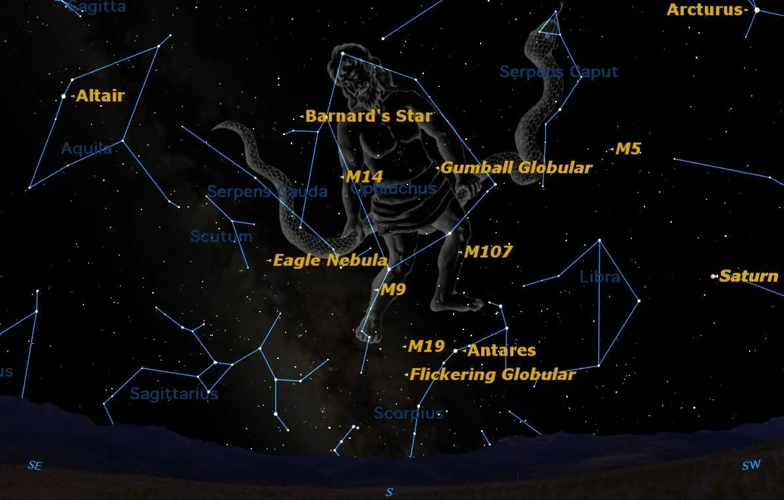
Japanese mythology is deeply rooted in the country’s history and has influenced various aspects of Japanese culture, art, and literature. The mythology of Japan consists of a vast collection of stories, legends, and beliefs that have been passed down through generations. The foundation of Japanese mythology lies in the creation stories, which explain the origins of the world and the divine beings who shaped it. One prominent creation myth is the story of Izanagi and Izanami, who gave birth to the islands of Japan and a multitude of gods and goddesses. These gods and goddesses, known as kami, are considered to be the deities of natural forces, such as the sun, moon, and mountains. They are revered and worshipped in Shinto, the indigenous religion of Japan. Mysterious and often enigmatic, the kami are believed to interweave the spiritual and physical realms, protecting and guiding the people of Japan. Another key aspect of Japanese mythology is the presence of mythical creatures and supernatural beings. From the mischievous kitsune (a fox spirit) to the powerful dragon-like creature known as the ryū, these beings often play significant roles in folklore, legends, and even modern popular culture. The myths and legends of Japan also explore themes of honor, duty, and the interconnectedness of nature and humanity. This overview provides a glimpse into the rich tapestry of Japanese mythology, setting the stage for the comparisons we will make with other mythological traditions.
Similarities with Greek Mythology
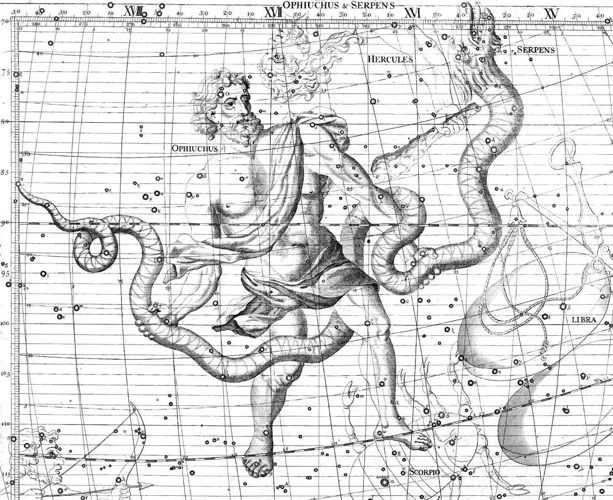
Greek mythology and Japanese mythology share several intriguing similarities that reveal the universal patterns found in human storytelling. Both mythologies feature complex pantheons of gods and goddesses who possess distinct personalities, powers, and dominions. For example, Zeus, the king of the Greek gods, can be likened to the Japanese deity Amaterasu, who is revered as the goddess of the sun. Additionally, Greek and Japanese mythology both explore the concept of creation through dramatic stories. In Greek mythology, the world is born out of Chaos, while in Japanese mythology, the islands of Japan emerge from the union of the deities Izanagi and Izanami. These creation stories serve as the foundation for the cosmologies of both mythologies. Another shared theme is the presence of epic heroes who undertake extraordinary quests and face supernatural adversaries. Hercules, known for his incredible strength, can be compared to the iconic Japanese hero, Momotarō, who defeats demons with his heroic companions. These resemblances highlight the fundamental human desire to explain the mysteries of the world through vibrant myths and folklore.
Creation Stories
In Japanese mythology, creation stories hold a significant place, offering different narratives about the origins of the world. One prominent creation myth is the tale of Izanagi and Izanami. According to this myth, Izanagi and Izanami were a divine couple tasked with the creation of the Japanese islands. They stood on the Floating Bridge of Heaven and, using a jeweled spear, began stirring the primeval ocean. As they lifted the spear, the seawater that dripped from it formed the first island, Onogoro. Izanagi and Izanami descended to the island and built a pillar, symbolizing the center of the world. They then circled the pillar in opposite directions, with Izanami speaking first. As they completed their circles, they encountered one another, and Izanagi exclaimed, “Ah, what a beautiful maiden!” This marked the beginning of their union and the creation of numerous gods and goddesses, including Amaterasu, the sun goddess, and Tsukuyomi, the moon god. The story of Izanagi and Izanami showcases the belief in the divine origins of Japan and the sacred role of these initial deities in shaping the world and all its subsequent inhabitants.
Gods and Goddesses
When it comes to gods and goddesses, Japanese mythology presents a diverse pantheon, with each deity carrying a unique role and significance. One of the most important gods is Amaterasu, the goddess of the sun and the ancestress of the imperial family. Amaterasu is highly revered and is believed to bring light, warmth, and prosperity to the world. Another significant deity is Susanoo, the storm god known for his volatile nature and association with seas and storms. Susanoo is often depicted as a fierce warrior and a symbol of chaos and disorder. In addition to these prominent figures, there are numerous other gods and goddesses in Japanese mythology, each in charge of a specific aspect of life or nature. For example, Hachiman is the god of war and protection, while Inari is the goddess of rice, fertility, and agriculture. Benzaiten is the goddess of knowledge, arts, and beauty. These deities are not only seen as powerful entities but also as anthropomorphic representations of natural forces and human emotions. The unique traits and characteristics attributed to the gods and goddesses of Japanese mythology reflect the importance of nature, spirituality, and the human experience in Japanese culture.
Differences with Norse Mythology
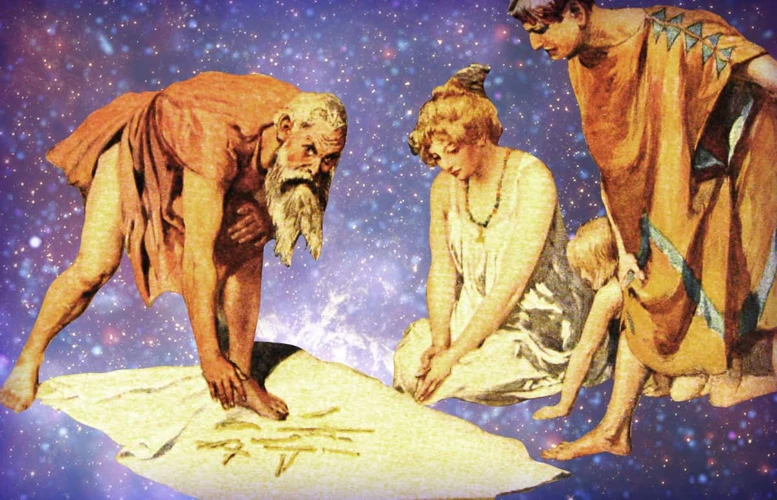
Norse mythology, originating from the tales and beliefs of ancient Norse culture, presents distinct differences when compared to Japanese mythology. One significant difference lies in the concept of the afterlife. While Japanese mythology emphasizes the idea of multiple realms and the cyclical nature of life and death, Norse mythology introduces the notion of Valhalla, a grand hall where fallen warriors are rewarded with eternal feasting and fighting alongside gods and goddesses. This stark contrast showcases the contrasting beliefs about the afterlife in these two mythological traditions. Additionally, when examining the themes and symbols, Norse mythology often centers around themes of fate, destiny, and the heroic journey, while Japanese mythology places more emphasis on the interconnectedness of nature, the importance of harmony, and the duty to honor the kami. Such distinctions further highlight the unique characteristics of these mythological systems, allowing individuals to delve into the varied worlds they present.
Concept of the Afterlife
In Japanese mythology, the concept of the afterlife holds a unique and intricate significance. Rather than a singular realm, the afterlife in Japanese mythology is believed to consist of multiple different realms or planes of existence. One such realm is Yomi-no-kuni, also known as the Land of the Dead or the Netherworld. Yomi-no-kuni is depicted as a gloomy and desolate place where the souls of the deceased reside. However, unlike other mythological traditions, Yomi-no-kuni is not seen as a place of eternal reward or punishment. Instead, it is viewed as a realm of rest and reflection, where souls continue their journey of transformation. It is believed that the journey through the afterlife is influenced by one’s actions and behavior in the physical world. Those who have lived virtuously and honorably may be granted access to a more favorable realm, while those who have behaved maliciously may face a more challenging path. This belief in the potential for spiritual growth and progress in the afterlife is a distinctive aspect of Japanese mythology. Additionally, the concept of ancestor worship is deeply ingrained in Japanese culture. Ancestors are seen as protective and guiding spirits, and offerings and rituals are performed to honor and communicate with them. The reverence for ancestors reinforces the idea of a continued connection between the living and the dead, emphasizing the ongoing presence and influence of the deceased in the lives of their descendants. The concept of the afterlife in Japanese mythology, with its emphasis on transformation, reflection, and the enduring bond between the living and the dead, sets it apart from other mythological traditions.
Themes and Symbols
In Japanese mythology, themes and symbols play a significant role in conveying deeper meanings and conveying the cultural values and beliefs of the people. One prominent theme is the idea of balance and harmony between humans and nature. This is reflected in the concept of “wa,” which emphasizes the importance of maintaining harmonious relationships and finding balance in all aspects of life. Another recurring theme is the notion of honor and loyalty, often exemplified through the samurai code of conduct known as Bushido. Samurai warriors were expected to demonstrate unwavering loyalty to their lords and were willing to sacrifice their lives in the pursuit of honor and duty. Symbolism is heavily utilized in Japanese mythology to represent abstract concepts and convey spiritual or mystical ideas. For example, the cherry blossom, known as sakura, is a symbol of transient beauty and the fleeting nature of life. The dragon, on the other hand, represents power, wisdom, and good fortune. The use of symbols in Japanese mythology adds depth and layers of meaning to the stories and legends passed down through generations. By exploring and understanding these themes and symbols, we gain deeper insights into the cultural values and beliefs of the Japanese people and their unique mythological tradition.
Comparison with Hindu Mythology
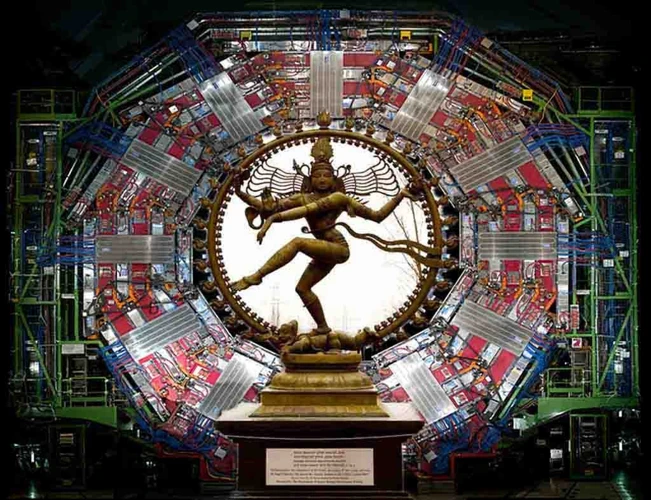
The comparison between Japanese and Hindu mythology reveals intriguing similarities and distinct differences. Both mythological traditions boast a rich pantheon of divine beings and avatars. In Hindu mythology, gods and goddesses play essential roles and are worshiped as sacred beings with unique attributes and powers. These deities, such as Brahma, Vishnu, and Shiva, have their own distinctive stories and are often associated with specific realms and elements of life. Similarly, Japanese mythology features a multitude of gods and goddesses known as kami, who embody natural forces and phenomena. However, the concept of avatars, divine beings taking physical forms to interact with humans, is particularly emphasized in Hindu mythology.
Additionally, both mythologies encompass enthralling tales of mythical creatures and legends. Hindu mythology is known for its diverse range of mythical creatures, including the Garuda (a giant bird-like creature), Nagas (serpent deities), and Gandharvas (celestial musicians). Japanese mythology also offers a host of captivating creatures, from the shape-shifting kitsune (fox spirits) to the mythical creature called the Kirin (a magical hooved creature resembling a deer or a unicorn). These creatures often add an element of magic and mystery to the respective mythologies.
While Japanese and Hindu mythologies share certain characteristics, such as the presence of divine beings and mythical creatures, each tradition has its own unique stories, beliefs, and cultural significance. Understanding and exploring the similarities and differences between these mythological traditions enhances our appreciation for the complexities of human imagination and the diverse ways in which ancient civilizations sought to make sense of the world around them. (Link: role-of-gods-goddesses-hindu-mythology)
Divine Beings and Avatars
In Japanese mythology, divine beings and avatars play a significant role in shaping the narrative and embodying various aspects of the natural world and human experiences. One prominent divine being in Japanese mythology is Amaterasu, the goddess of the sun and one of the most important deities in Shinto. Amaterasu is believed to be the ancestor of the Japanese imperial family and is associated with fertility, agriculture, and prosperity. She is often depicted as a radiant and powerful figure, bringing light and warmth to the world. Another notable divine being is Susanoo, the god of storms and the sea. Susanoo is known for his boisterous and unpredictable nature, often causing chaos and destruction. Despite his disruptive tendencies, he also possesses a protective side and is believed to have saved Japan from a fearsome eight-headed serpent known as Yamata no Orochi. Avatars, on the other hand, are representations or manifestations of divine beings in physical form. One well-known avatar in Japanese mythology is the legendary figure of Kannon, also known as Kannon Bosatsu or Kuan Yin. Kannon is a bodhisattva, an enlightened being who guides and helps those in need. Often depicted as a compassionate figure, Kannon is associated with mercy, healing, and compassion. Through divine beings and avatars, Japanese mythology explores the complex relationship between the divine and human realms, providing insights into the values and beliefs of Japanese culture.
Mythical Creatures and Legends
In Japanese mythology, the presence of mythical creatures and legendary beings adds an element of wonder and intrigue to the stories. These creatures often embody various aspects of nature, possessing powers beyond human comprehension. One such creature is the kitsune, a fox spirit known for its shapeshifting abilities and intelligence. Reputedly mischievous, the kitsune is believed to possess magical powers and can bring either good fortune or chaos to those it encounters. Another prominent creature is the tengu, known for its bird-like appearance and connection to the mountains. Tengu are often depicted as skilled warriors or protectors of the forests, wielding great strength and mystical powers. The kappa, on the other hand, is a water creature resembling a turtle or frog. They are known for their mischievous behavior and are said to pull people into bodies of water. However, they also possess a weakness – if one bows to a kappa, it must return the bow and spill the water held in the depression on its head, rendering it powerless. Japanese mythology also includes legendary beings like the oni, which are powerful demons with fearsome appearances and immense strength. Often depicted with horns and fierce expressions, they symbolize malevolence and chaos. These mythical creatures and legendary beings bring a touch of enchantment and awe to the stories that have been passed down through generations, shaping the collective imagination of the Japanese people. Their presence in Japanese mythology adds depth and complexity, making it a unique and intriguing tradition. (Reference: role of valkyries)
Exploring Chinese Mythology
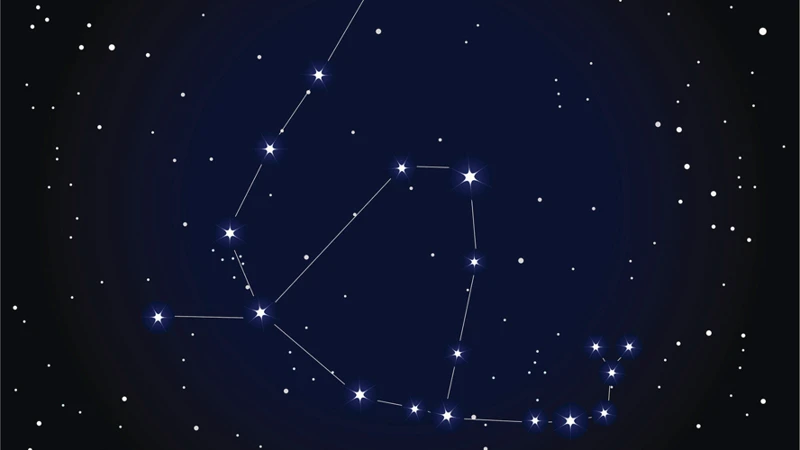
Chinese mythology is a captivating realm filled with ancient tales, legendary heroes, and profound philosophical concepts. One of the fundamental principles in Chinese mythology is the concept of Yin and Yang, which represents the balance and harmony between opposing forces. This concept extends to all aspects of Chinese mythology, including the interconnectedness of nature, the cosmos, and human existence. Chinese mythical creatures are diverse and range from the benevolent dragons to the mischievous, shape-shifting fox spirits known as huli jing. These creatures often embody specific qualities and are associated with various elements of nature. Chinese mythology is also known for its legendary heroes, such as Houyi, who shot down the suns to save the world, and the Monkey King, Sun Wukong, who possesses immense power and embarks on epic adventures. The cultural significance of Chinese mythology can be seen in traditional Chinese festivals and rituals that are deeply rooted in these ancient tales. Exploring Chinese mythology gives us a window into the rich tapestry of Chinese culture, symbolism, and beliefs, and provides fascinating comparisons to other mythological traditions from around the world.
Concepts of Yin and Yang
The concepts of Yin and Yang, deeply rooted in Chinese mythology, play a significant role in understanding the balance and harmony of the universe. Yin represents the feminine, passive, and dark aspects, while Yang represents the masculine, active, and light aspects. These two opposing forces are interconnected and complementary, creating a harmonious equilibrium. In Chinese mythology, the balance between Yin and Yang is crucial for the well-being of both the physical and spiritual worlds. Yin is associated with the moon, earth, water, and darkness, symbolizing receptivity, intuition, and introspection. Yang, on the other hand, is associated with the sun, heaven, fire, and light, representing assertiveness, strength, and action. The concept of Yin and Yang is often depicted through the iconic Taijitu symbol, commonly known as the Yin-Yang symbol. It illustrates the interdependent nature of Yin and Yang, with a small dot of Yin within the Yang and a small dot of Yang within the Yin, representing the idea that neither can exist without the other. This concept extends beyond mythology and permeates various aspects of Chinese culture, including philosophy, medicine, and martial arts. The balance between Yin and Yang is believed to promote good health, prosperity, and spiritual growth. With its inherent duality, the concept of Yin and Yang serves as a profound reflection of the intricate and interconnected nature of existence in Chinese mythology and beyond.
Legendary Heroes
Legendary heroes are a prominent feature in various mythological traditions, and Japanese mythology is no exception. These heroes often possess extraordinary abilities and embark on heroic quests that shape the destiny of their world. In Japanese mythology, one such legendary hero is Susanoo, the storm god. Known for his ferocity and tempestuous nature, Susanoo is a central figure in the myth of Amaterasu, the sun goddess. According to the legend, Susanoo was banished from heaven for his disruptive behavior and descended to earth. Through a series of trials and battles, Susanoo eventually reconciles with his sister Amaterasu and becomes a crucial figure in the pantheon of Japanese gods and goddesses. Another renowned hero is Yamato Takeru, often referred to as the “brave of Yamato.” Yamato Takeru is known for his fearlessness, outstanding martial skills, and his quest to protect Japan from various supernatural threats. His adventures include slaying a giant serpent, battling a monster in the underworld, and overcoming treacherous obstacles in his pursuit of justice. These legendary heroes not only showcase bravery and valor but also embody the values and virtues held dear by the Japanese people. Their stories serve as inspiration for generations, highlighting the triumph of good over evil and the indomitable spirit of the human journey.
Conclusion
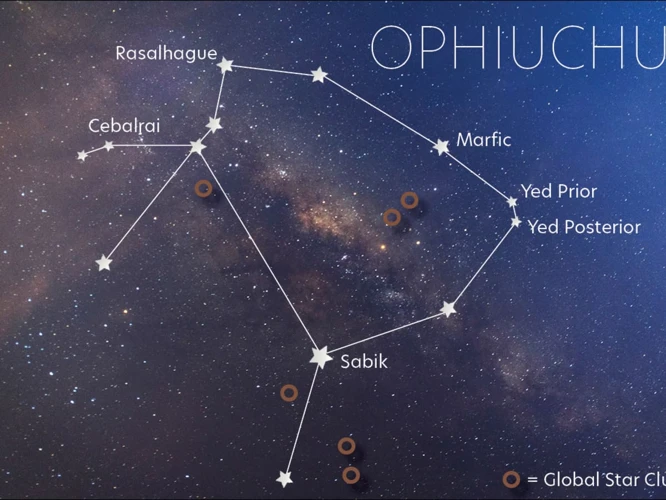
In conclusion, exploring Japanese mythology unveils a captivating world filled with gods, goddesses, and mythical creatures that have shaped the cultural landscape of Japan. The rich tapestry of Japanese myths and legends provides insights into the beliefs and values of the Japanese people throughout history. From the creation stories that explain the origins of the world to the intricate relationships between gods and humans, Japanese mythology reflects a deep reverence for nature and a profound understanding of the interconnectedness of all things. While drawing comparisons between Japanese mythology and other mythological traditions, such as Greek, Norse, Hindu, and Chinese, we can appreciate both the unique aspects and the universal themes that run through these diverse cultural narratives. Whether it’s the gods and goddesses, the concept of the afterlife, or the mythical creatures and legends, each mythological tradition offers its own distinct flavor and significance. By delving into the realms of mythology, we gain a deeper appreciation for the human imagination and the ways in which stories help us make sense of our existence. So let us continue to unravel the mysteries of mythology, enriching our understanding of the world and ourselves.
Frequently Asked Questions

1. What are some famous Japanese gods and goddesses?
Some of the famous Japanese gods and goddesses include Amaterasu, the goddess of the sun; Susanoo, the god of storms and seas; and Tsukuyomi, the god of the moon.
2. Is Japanese mythology primarily based on Shinto religion?
Yes, Japanese mythology is closely intertwined with Shinto, the indigenous religion of Japan. Many of the gods and goddesses in Japanese mythology are worshipped in the Shinto tradition.
3. Are there any creation stories in Japanese mythology?
Yes, there are several creation stories in Japanese mythology. One popular story involves Izanagi and Izanami, who created the islands of Japan and gave birth to numerous gods and goddesses.
4. What role do mythical creatures play in Japanese mythology?
Mythical creatures play a significant role in Japanese mythology. They are often depicted as spirits, guardians, or agents of supernatural powers. Examples include the kitsune (fox spirits), tengu (bird-like creatures), and the legendary dragon-like ryū.
5. How does Japanese mythology influence Japanese culture?
Japanese mythology has a profound influence on Japanese culture. It can be seen in various aspects such as traditional celebrations, art forms like Kabuki theater and Sumi-e painting, and even modern popular culture, including anime and manga.
6. Are there any similarities between Japanese and Greek mythologies?
Yes, there are some similarities between Japanese and Greek mythologies. Both mythologies feature powerful gods and goddesses, epic tales of heroism, and stories of creation and destruction.
7. What distinguishes Japanese mythology from Norse mythology?
One key difference is the concept of the afterlife. In Japanese mythology, there is a belief in various realms of the afterlife, such as Yomi, the land of the dead. In Norse mythology, the afterlife is depicted as different realms, including Valhalla for fallen heroes.
8. Are there divine avatars in Japanese mythology?
No, unlike Hindu mythology where gods take on avatars, Japanese mythology does not have a similar concept. The gods and goddesses in Japanese mythology are usually depicted as distinct and individual beings.
9. What are some famous mythical legends from Japanese mythology?
One famous mythical legend is the story of Momotarō, a boy born from a peach who goes on a quest to defeat demons. Another popular legend is the tale of Urashima Tarō, a fisherman who visits an underwater palace.
10. How does Chinese mythology differ from Japanese mythology?
One notable difference is the concept of Yin and Yang in Chinese mythology. It represents the balance between opposing forces. In Japanese mythology, the emphasis is more on the harmony and interconnectedness of nature and humanity.
References
Frequently Asked Questions

1. How does Japanese mythology compare to other mythological traditions?
Japanese mythology differs significantly from other mythological traditions, as it incorporates unique concepts, gods, and legends that are distinct to the country’s culture. However, there are also some intriguing similarities and shared themes.
2. What are the notable similarities between Japanese and Greek mythology?
Both Japanese and Greek mythology have creation stories that involve multiple generations of gods and goddesses. Additionally, they share common themes such as the notion of a pantheon of powerful deities and the presence of supernatural creatures.
3. How does Japanese mythology differ from Norse mythology?
When comparing Japanese mythology with Norse mythology, one major difference lies in their concepts of the afterlife. Japanese mythology revolves around the idea of multiple afterlife realms, while Norse mythology focuses on a warrior’s afterlife in Valhalla.
4. What are some unique themes and symbols found in Japanese mythology?
Japanese mythology is rich in unique themes and symbols. For example, the concept of kami, which refers to the divine spirits in nature, plays a significant role in Japanese mythology. Additionally, symbols like the cherry blossom and the koi fish hold deep cultural and mythological significance.
5. How does Japanese mythology compare to Hindu mythology in terms of divine beings?
While Japanese mythology and Hindu mythology both feature a varied pantheon of gods and goddesses, Hindu mythology is known for its belief in avatars, divine beings who incarnate on Earth. In contrast, Japanese mythology focuses more on ancestral and nature spirits.
6. Are there any common mythical creatures and legends between Japanese and Hindu mythology?
There aren’t significant shared mythical creatures or legends between Japanese and Hindu mythology. Japanese mythology has its own unique creatures like the Kitsune and Tengu, while Hindu mythology features mythical creatures such as Garuda and the Nagas.
7. How does Chinese mythology differ from Japanese mythology?
Chinese mythology differs from Japanese mythology in several ways. In Chinese mythology, the concept of Yin and Yang is fundamental, representing the balance of opposing forces. Japanese mythology, on the other hand, focuses more on the kami, spirits that inhabit natural elements.
8. Are there any notable legendary heroes in Chinese mythology?
Chinese mythology boasts a rich collection of legendary heroes, such as the Monkey King (Sun Wukong) from the classic tale “Journey to the West.” These heroes often possess incredible powers and embark on epic quests.
9. How does Japanese mythology compare in terms of popularity with other mythological traditions?
While Greek and Norse mythology may enjoy more global recognition, Japanese mythology holds immense popularity within Japan and has gained increasing attention worldwide. Its diverse and captivating tales have captivated audiences through various mediums, including anime, manga, and video games.
10. Is it possible to trace Japanese mythology’s influence on other mythological traditions?
Although Japanese mythology has distinct characteristics, it is challenging to trace direct influences on other mythological traditions. However, there is evidence of shared themes and mutual inspiration between different mythologies across cultures.
References
- What are the similarities and differences between Chinese …
- Japanese folklore and mythology
- A Comparative Exploration of Ancient Eastern Legends







